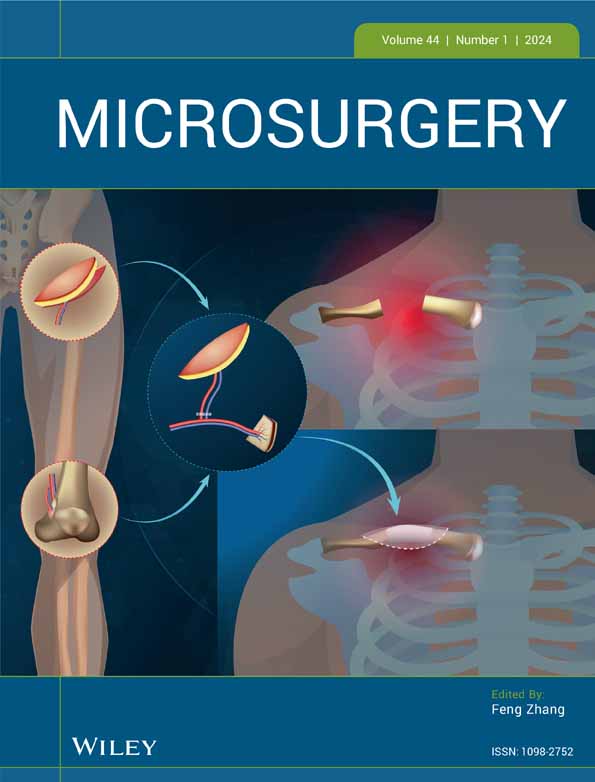Bilateral gluteal reconstruction with deep inferior epigastric perforator flaps and saphenofemoral arteriovenous loops
Abstract
The use of liquid silicone injections for soft tissue augmentation harbors numerous risks and is not approved by the FDA. Still, such injections are frequently performed by unlicensed providers, often in the gluteal region, and can lead to infection, soft-tissue breakdown, scarring, and disfigurement. The purpose of this case report was to demonstrate the use of immediate, abdominally based free flaps for reconstruction in a patient with bilateral total gluteal defects and limited inflow options in the setting of remote silicone injections. The patient is a 45-year-old female who developed chronically infected injected silicone in the bilateral buttocks leading to draining abscesses and soft tissue breakdown. The patient required radical debridement and excision of the bilateral buttocks to remove all foreign material. After intermediate skin grafting of the residual wounds, the patient then was deemed a candidate for bilateral free flap reconstruction of the buttocks. On exploration of the bilateral defects, both 20 cm × 10 cm in size, the gluteal vessels were non-usable, and preoperative CTA additionally had revealed no suitable posteriorly based perforators. Therefore, bilateral arteriovenous (AV) loops, measuring 30 cm in length, were then constructed utilizing the greater saphenous veins anastomosed to the femoral arteries which were then tunneled to the defect. The soft tissue defects were concurrently reconstructed with bilateral deep inferior epigastric perforator (DIEP) flaps measuring 16 cm × 12 cm. The postoperative course was complicated by small seromas in each groin requiring drain placement by interventional radiology on postoperative day 16. Otherwise, the patient's buttocks healed well, and functionally, the patient had regained the ability to sit and was satisfied with the aesthetic appearance of the reconstruction as of last follow-up at 10 months. Abdominally based free flap reconstruction with AV loops, in this case, provided for successful reconstruction of otherwise challenging soft-tissue defects with limited inflow options.
CONFLICT OF INTEREST STATEMENT
The authors have no relevant financial interests to disclose.
Open Research
DATA AVAILABILITY STATEMENT
The data that support the findings of this study are available on request from the corresponding author. The data are not publicly available due to privacy or ethical restrictions.




